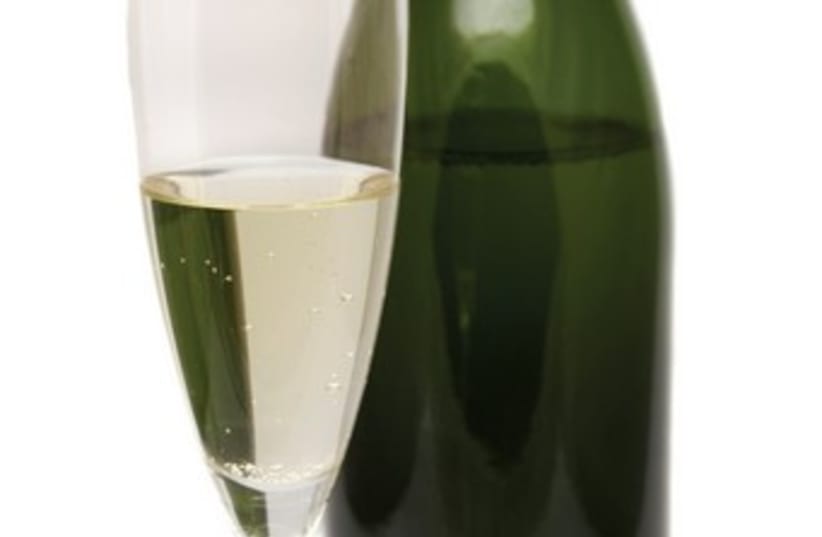Sparkling wine remains the classic wine to make a toast with, be it on New Year’s Eve or at a wedding. It is also a symbol of success and happiness.Champagne is the byword for quality in sparkling wines.It is made in the Champagne region in northern France in the most expensive, time-consuming way. It can be bone dry, crisp with mouth-puckering acidity or rich with a bready, yeasty aroma. If it is image you want, then champagne is the only answer.However, champagne made by the champagne method, now more correctly known as the classic or traditional method, is no longer confined only to champagne. Today, many countries produce wine in this way. For instance, California, Australia and New Zealand have flavorful sparkling wines that rival champagne for quality. The best sparkling wines are produced in cooler climates, and it will certainly be a surprise to many that England today has some very high-quality sparkling wines. The soils of southeast England and Champagne are similar.The language of sparkling wines can be confusing.“Brut” refers to a dry or very dry wine. The term “Sec” or “Extra Dry” refers to an off-dry wine. “Demi Sec” is semi-dry to semi-sweet, and “Rich” is sometimes used to denote sweet.A Blanc de Blancs is a sparkling wine made 100 percent from white grapes, usually Chardonnay. It will be lighter, with a more delicate aroma than the others.Blancs de Noirs is a sparkling wine made only from black grapes, usually Pinot Noir or Pinot Meunier. It will be more full bodied, with some berry notes in the aroma. The three grapes together make up the traditional champagne blend.There are other sparkling wines that are particularly popular in Israel. Cava is Spain’s national sparkling wine, which is made in the Catalonian region. It provides quality and is made in the traditional way, but at a lower price than the French version.Cava is in fact so popular, that it has become the slangin Israel for any sparkling wine.Prosecco is the latest rising star. This is a light, soft, fruity and slightly creamy sparkling wine made in the Veneto region of Italy. It is usually a little cheaper than Cava, and so it is attractive for those buying on price.Asti Spumante from Northwest Italy has a frothy, grapey sweetness and is a full-fledged sparkling wine. For those who like a more delicate fizz, try the lightly sparkling Moscato d’Asti.Lambrusco is a semi-sparkling wine, with a slight fizz.These are known as frizzante in Italian. It may be red or white and in any style from dry to semi-sweet. The sweet ones are glugging wines, but the drier wines can be bracing and refreshing.Sparkling wine is the classic aperitif and goes with all mezze, hors d’oeuvres, fish dishes, sushi and poultry. In fact, champagne goes with anything and everything, and there is nothing wrong with drinking it throughout a meal.It is even a good way to end a meal after the dessert wine, providing a clean, fresh finish.The versatility of sparkling wine is best summed up by Lily Bollinger, the legendary owner of the Bollinger Champagne House. I have this memorable quote framed in my office: “I only drink champagne when I’m happy and when I’m sad. Sometimes I drink it when I’m alone. When I have company I consider it obligatory. I trifle with it if I’m not in a hurry and drink it when I am, otherwise I never touch the stuff, unless I am thirsty.”Local bubbly
Israel produces a full range of sparkling wines, from the lightly sparkling Moscatos to the finest champagne method wines.
For those who want to drink blue and white instead of imported wine, these are the wines that are recommended:
Dalton Moscato, Hermon Moscato, Selected Moscato, Teperberg Moscato and Red Moscato, Young Selected Moscato and Carignano. These are light, fruity, easy drinking wines, with a touch of sweetness and a slight sparkle.
